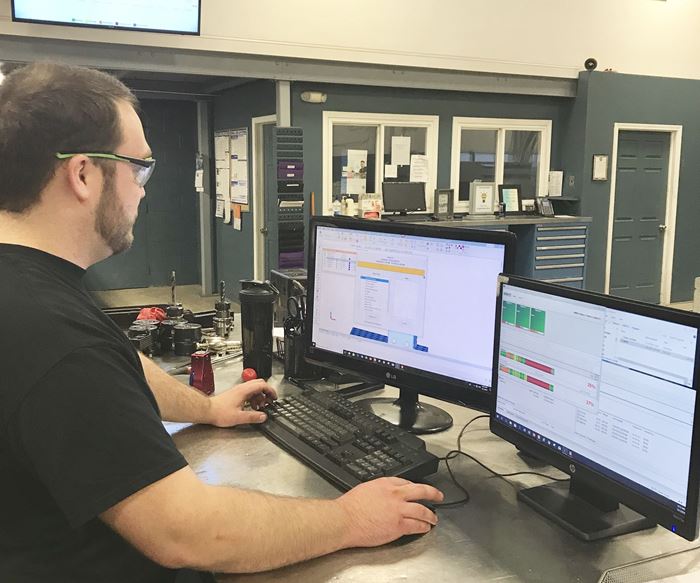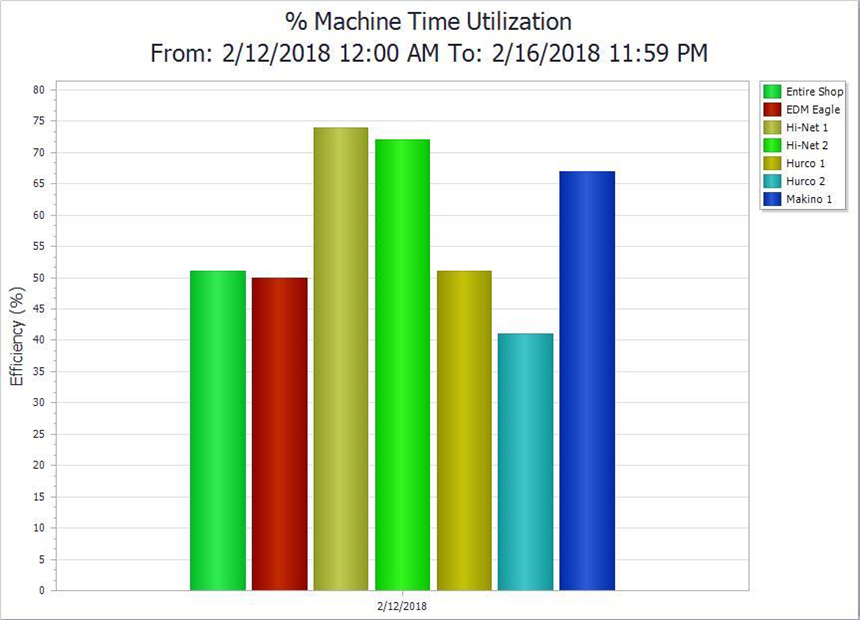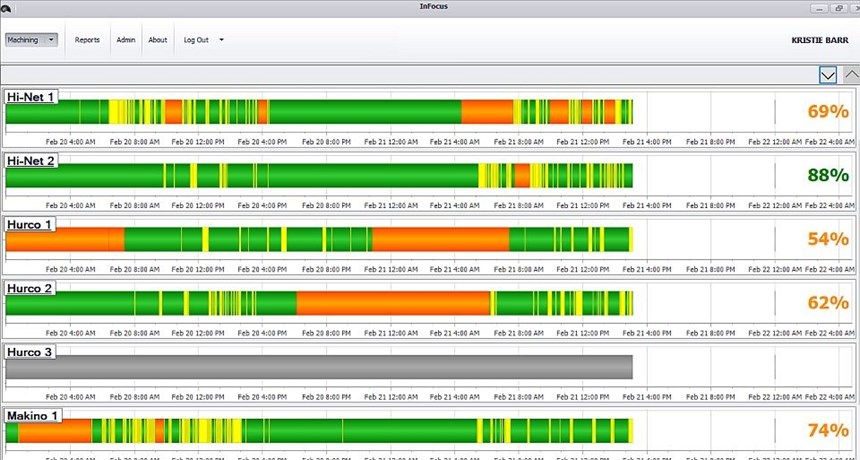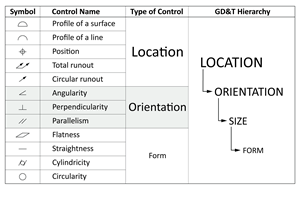Machine Monitoring Software Optimizes TK Mold and Engineering’s Productivity
TK Mold and Engineering Inc. President Tom Barr says his company makes more strategic, effective decisions about its day-to-day operations and workforce needs because it uses InFocus software from R.E.R. Software Inc.
TK Mold and Engineering Inc. (TK Mold) President Tom Barr knew something wasn’t quite right with his shop’s productivity levels. The company is based out of Romeo, Michigan, was established in 2003 and has 24 employees. It builds injection molds up to 1,000 tons primarily for automotive industry. Its specialties include interior and exterior trim tooling, tolerance insert molds, two-shot rotary and over-molding molds and molds for non-automotive products. “Some of our machines would be running while others were not. Some departments would be extremely busy while others were waiting for work,” he says. “The problem was that I knew something was wrong, but I had no evidence to pinpoint the issue or any idea how to solve it.”
That changed when he met Roger Bassous, president of R.E.R. Software, Inc. (Rochester, Michigan) at the 2017 American Mold Builders Association conference and learned about InFocus, a machine monitoring and job tracking system that is designed specifically for the moldmaking industry. By June of that year, TK Mold had purchased and installed the InFocus software. The company reports that the software helped the TK Mold team build more molds than it did in 2016 and increased sales by 24 percent, which made 2017 its best year ever.
Measurement Removes Mysteries
InFocus measures different aspects of shop-floor operations and has the ability to show individual machine and overall shop efficiencies. TK Mold initially used the software to focus on the effectiveness of its CNC and EDM departments, setting it up so that the software precisely categorizes each TK Mold machine by how long it has been running, how long programs are running (including the spindle speeds), and when a machine stops or shuts down. “Before, we tracked everything manually,” Barr says. “The guys would write that a machine ran for so many hours, and if someone forgot to document something, we would do without it. We were working with inaccurate information. With InFocus, the information is super accurate because it prompts them to record reasons for machine inactivity.”
Barr says that he uses InFocus for tracking each machine in real-time to ensure that jobs are going according to plan. Meanwhile, his machinists use it to document information about their respective machines, such as when a machine stops. “Every machine has a computer monitor connected to it, giving users access to the programming software for that machine and access to the InFocus software,” Kristie Barr-Salter, purchasing/estimating coordinator at TK Mold, says. She also is Tom’s daughter. “Roger downloaded the InFocus software on every computer that needed it, including in the office. I do not run a machine, but I can access all of the data that InFocus collects whenever I need it.” She says that InFocus already has set TK Mold’s standards for how long its machines should be running. “Machines running short programs should average 14 hours a day, and our larger machining centers, like the Makino, HiNet and Eagle that run long or multiple programs, should run practically 24/7. If that isn’t the case when we look at the InFocus reports, we know that there is a problem.”
In the instance of a stopped machine, a prompt will appear on that machine’s monitor after a certain amount of time that the operator designates. The prompt requires justification for the stoppage. “We have worked with Roger to customize reasons why a machine has stopped,” Barr says. Reasons can include things like “waiting on EDM department,” “machine maintenance,” “job setup” and more. Additionally, machinists can enter a more specific reason if the drop-down choices are not descriptive enough. Either way, InFocus will not allow the machine to run again until someone logs a reason that the mold stopped. “We run a report for every work week and weekend,” he says. “By consolidating the reasons for idle times, we can measure each of them and determine the next actions. We have a reason that is called ‘shop meeting,’ for instance. It helps us know whether we’re pulling a guy away from his machine too much and how it’s affecting run times.”
Additionally, Barr says that InFocus data shows the user whether operations are continuously improving and can also reveal problems that previously were unidentified. “For example, InFocus showed that our machines were running constantly during the day, which you would expect to see since machinists are there during the day. But, it raised questions about the need to purchase another CNC machine. It so happens that the InFocus reports also indicated that our machining programs were stopping too soon after our people went home at the end of the day,” Barr says. He gathered the EDM and CNC team members and examined the data. “As a group, we came up with ways that we could fix this problem,” he says. Solutions included running short programs during the day and long programs at night. “We also found that one of our machines had a malfunctioning control panel, which we replaced. R.E.R. Software created a text-messaging system that alerts the machinist that his or her machine has stopped, at which point the machinist can determine whether to start another program or wait until morning.” Salter says that the company’s overall shop efficiencies have increased significantly because of these actions. “From June to September, our shop’s
efficiency ranged between 35 percent and 58 percent,” she says. “Now, from October to January, it ranges between 45 percent and 65 percent.”
“Data that InFocus collects can show where bottlenecks are occurring through the machining process,” Bassous says. “Most people believe that understanding the runtime on equipment is the crucial part of machine monitoring, but we believe that understanding the idle reasons should be the driving factor behind using a machine monitoring system. It is great that the machines run 80 percent of the time, but the focus should really be on why the machines are not running 20 percent of the time.”
History Hones Decision Making
In addition to tracking machine use in real time, InFocus creates a history about that use. Barr says that they now can track every machine’s activities, and can generate reports dating back to June 2017, when they first installed the software. These reports have helped TK Mold make more strategic, effective decisions about its day-to-day operations and its future workforce needs.
Operationally, Barr knew in October that he would need more employees working on CNC, what with the company’s growing customer base. He says it became a matter of choosing which of its seven apprentices to train and on which machine to start him or her. By looking at historical reports that the InFocus software generates, Barr was able to see which machines needed workers and tapped into the company’s younger team members. “TK Mold is looking toward the future in moldmaking,” he says. “Today, over half of the TK Mold population ranges between 18–26 years of age. We recently started an apprenticeship program so that TK Mold would be able to sustain itself for future generations to come.” He went through InFocus reports month by month to confirm that the company would benefit from an additional machinist to run the two Hurco CNC machining centers (a VMX 24 and VMX 24 HSI) that the company uses to machine small components. The company selected and trained an apprentice for about a month until he felt comfortable running the CNC machine alone. “During the month of October 2017, InFocus recorded 623.13 unused hours on that CNC,” Barr says. “By comparison, data from December shows that the machine’s idle time was cut in half, down to 359.64 unused hours including hours shut down for Christmas. It proved that we made the right decision to bring an apprentice into the CNC department to help make more components.”
In another instance, Barr says that TK Mold has been extremely busy, and his first instinct told him to create a night shift to keep the machines running continually. “With InFocus, we used our historical data to confirm or deny the need for the night shift. We found that we were not using one of our three EDM machines enough, so we sold it and began increasing the use of our newest EDM machine, an OPS-Ingersoll Gantry Eagle 1200, because it is much more efficient and burns faster. We were able to see when we had downtime and incorporated the extra work into that machine’s schedule,” he says. “InFocus makes a mold shop environment think and operate like a production environment because of the kind of information a shop derives from it.”
Bassous says that InFocus is “alive” in the sense that it does not wait for a user to interact with it to know when an input of a reason for idle time is required. Instead, the software looks beyond use to help shops decipher the “why” behind a machine’s idle time. This then helps shops develop a strategy to improve use rates, as TK Mold has done.
“Once users understand the reason for a machine’s idle time, they can move on to automatic job tracking, another distinguishing feature of the InFocus system,” he says. “On newer equipment, users can track where a job is, what is being done to it and with which tools, people and machining strategies. The software collects all of these metrics automatically. Some customers have taken the actual number of hours tracked and have directly integrated them with their existing ERP system to get accurate and reliable cost metrics for jobs.”
Accessibility Eases Learning and Adapting
InFocus is very user friendly, according to Barr. “It’s so easy to use. Once a user configures the way that he or she needs it, all the user has to do is hover the cursor over a machine’s productivity bar to see precisely the reasons for any downtime that the software indicates for that machine.”
“InFocus will generate charts automatically and makes the data clear, sparing the user from having to gather tons of data,” Salter says. “All the user needs to do is log into the program daily or weekly—whenever he or she wants to check on the shop’s progress. Customers love it, because they know there is a credible way of tracking their tool, and they are reassured that we know what is happening with every job.”
Overall, Barr says that InFocus has made a real, positive impact on TK Mold. “InFocus has given us consistent proof of what needs to be done and the reassurance that our decisions are working,” he says. “We proudly display the InFocus monitor screen on the shop floor for all to see. The employees like to watch their progress during the day and are satisfied when they see a full green bar. Surprisingly, the departments like to compete with one another to see who has the best productivity percentage at the end of the day.”
Related Content
Tolerancing in Mold Design, Part 2: Using GD&T to Address Conventional Tolerancing Issues
Mold designers can achieve a single interpretation of workpiece functionality when following the American Society of Mechanical Engineers Geometric Dimensioning and Tolerancing standard.
Read MoreHow to Analyze and Optimize Cutting Conditions to Reduce Cycle Time
Plastic injection mold design and manufacturing company puts NC program optimization software module to the test. The results were surprising.
Read MoreMold Design Review: The Complete Checklist
Gerardo (Jerry) Miranda III, former global tooling manager for Oakley sunglasses, reshares his complete mold design checklist, an essential part of the product time and cost-to-market process.
Read MoreHow a Small Programming Change Cuts Cycle Time in Half
Overriding the CAM system when milling a series of lifter pockets helps to improve metal removal rate and increase feed rates.
Read MoreRead Next
How to Use Strategic Planning Tools, Data to Manage the Human Side of Business
Q&A with Marion Wells, MMT EAB member and founder of Human Asset Management.
Read MoreAre You a Moldmaker Considering 3D Printing? Consider the 3D Printing Workshop at NPE2024
Presentations will cover 3D printing for mold tooling, material innovation, product development, bridge production and full-scale, high-volume additive manufacturing.
Read MoreHow to Use Continuing Education to Remain Competitive in Moldmaking
Continued training helps moldmakers make tooling decisions and properly use the latest cutting tool to efficiently machine high-quality molds.
Read More
























